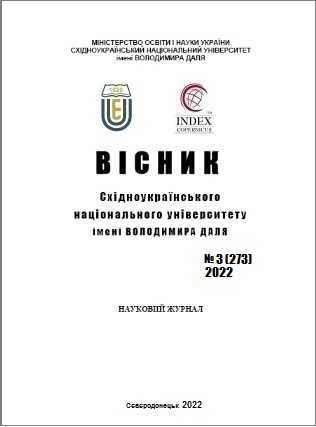To the question of life cycle cost definitions of the freight car in excess service life
DOI:
https://doi.org/10.33216/1998-7927-2022-273-3-93-96Keywords:
freight car, life cycle, cost of the life cycle of a car, excess service lifeAbstract
The article considers the issues of determining the cost of the life cycle of a freight car in case of excessive operation in order to increase its economic efficiency. Significant place for ensuring the safety of railway transport, which in turn makes it competitive in the market of transport services, belongs to the reliability, operability and safe operation of the existing rolling stock.However, the trend of increasing the number of cars in poor condition has gained considerable momentum. According to JSC Ukrainian Railways, the working fleet of the existing fleet of freight cars is 62 %, non-working – 38 %, and the total wear of freight cars is 91 %. Due to the limited capacity to upgrade the required number of cars and improve the situation associated with the growth of traffic, the intensification of the operation of cars in the transportation process will increase, which also leads to accelerated deterioration of the car fleet, which is significant faster than upgrade.One of the main requirements for rolling stock is reliability and safe operation throughout its service life. The reliability of freight cars in the process of work is achieved by observing a scientifically sound and economically sound maintenance system, an important indicator of which is the amount of costs incurred for its entire life cycle.There are three stages in the life cycle of a freight car. The first stage includes research and development to determine the long-term characteristics and in general the development of the car. The second stage, which includes the direct operation of a freight car during its service life (also provided that the car is operating overtime), is quite capacious. The third stage is the decommissioning of the car and its disposal. The costs of the first stage of the life cycle can be fully included in the price of the car by the manufacturer. Given this factor, the elements of the life cycle are the costs of the second and third stages of the life cycle. As for the largest item of costs, it falls on the second stage, which is considered to determine the value of the life cycle of a freight car when extending the service life.
References
1. Мурадян Л.А. Розвиток наукових основ забезпечення надійності вантажних вагонів на етапах життєвого циклу. Автореферат дис. д-ра техн. наук: 05.22.07. Дніпропетр. нац. універ. залізн. трансп. ім. акад. В. Лазаряна. Дніпро. 2020. 44 с.
2. Тартаковский Э.Д., Грищенко С.Г., Калабухин Ю.Е., ФалендышА.П. Методы оценки жизненного цикла тягового подвижного состава железных дорог: Монография. Луганск: Ноулидж, 2011. 174 с.
3. Bodnar B.E., Оchkasov O.B., Hryshechkina Т. S., Bodnar Е.B. Choosing the system of locomotive maintenance in view of the effect of dependent failures. Наука та прогрес транспорту. Вісник Дніпропетровського національного університету залізничного транспорту, 2018.№6(78). С. 47-58.
4. ДСТУ ГОСТ 31538-2016. Цикл життєвий залізничного рухомого складу. Загальні вимоги. Київ : Держстандарт України, 2016. 10 с.
5. Шапошник В.Ю. Підвищення ефективності системи те-хнічного обслуговування та ремонту вантажних вагонів. Дис. …канд-та. техн. наук: 05.22.07. Дніпро. Дніпропетр. нац. універ. залізн. трансп. ім. акад. В. Лазаряна. 2019. 241 с.
6. Мямлін С.В. Адаптивні байєсівькі моделі оцінювання показників надійності вантажних вагонів на етапах життєвого циклу / С.В Мямлін, В.В. Скалозуб, Л.А. Мурадян //Збірник наукових праць Українського дер-жавного університету залізничного транспорту, 2018. № 182. С. 80-91.
7. Гненний О.М., Мохаммадреза А. До питання оцінки та застосування вартості життєвого циклу продукції ма-шинобудування. Наука та прогрес транспорту. Вісник Дніпропетровського національного університету заліз-ничного транспорту, 2016. № 12. С. 7–13.
8. Фалендыш А.П., Вопросы модернизации тепловозов с учетом жизненного цикла/ А.П Фалендыш А.Л.Сумцов, О.В. Клецкая // Локомотив–информ. 2015. Вып. 103-104. С. 4–9.

